Boca de Camarones is a tiny hamlet on the Caribbean coast of Colombia. It is so small that most maps do not even mention it. Yet, it is so close to Santuario de Fauna y Flora Los Flamencos (Flamingo Sanctuary) that we planned to drive there, park the car and look around for flamingos. However, as often in Colombia, the reality altered our itinerary.

Getting from Palomino to Camarones, a small town just off the Troncal del Caribe, took less than an hour. That’s where we left the highway following the signs to the Flamingo Sanctuary. The road was steadily getting dustier and less maintained. A number of times, we noticed local folks looking for something between scarcely growing weathered trees and bushes. A little further the mystery was solved when we passed a group of people carrying heaps of dry wood.

Suddenly the asphalt ended next to the sign announcing that the Sanctuary was just a mere 50 meters ahead. We left our car under the solitary tree growing along the road, and walked toward a nearby lagoon.
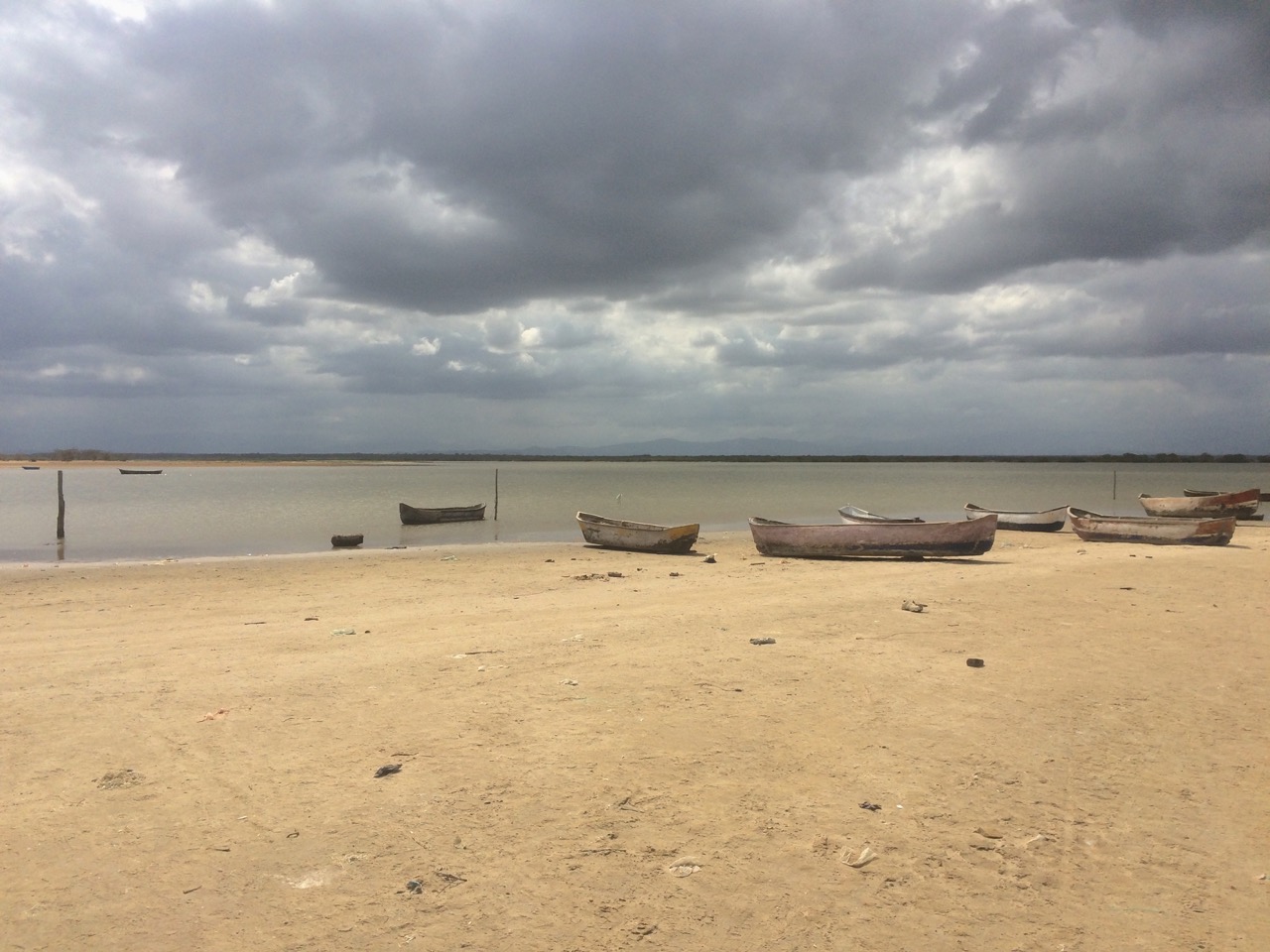
Amazingly, there was nobody around. It was absolutely quiet: a nice change of scenery from over-visited Tyrona Park. The lagoon with a few abandoned boats looked picture-perfect. A little bit further we noticed some activity: a small group of people, clearly tourists judging by their clothes, were getting into a boat with the colorful sail. Once they all got in, a local looking individual started pushing the boat from the beach. The water was so shallow that it took him a long time getting to the point where he jumped into the boat.
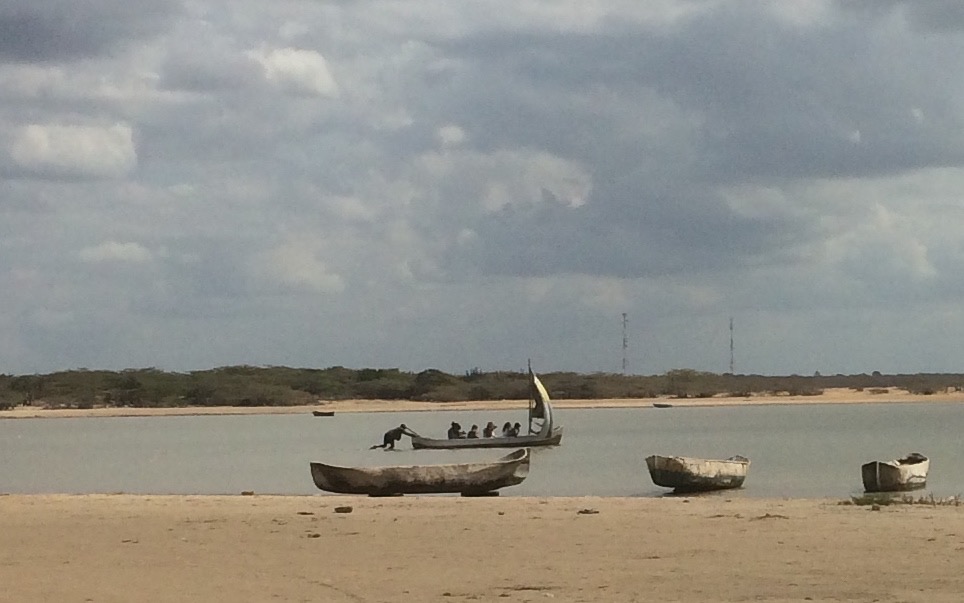
It was quite an entertaining sight, which kept us occupied while walking toward the seacoast.
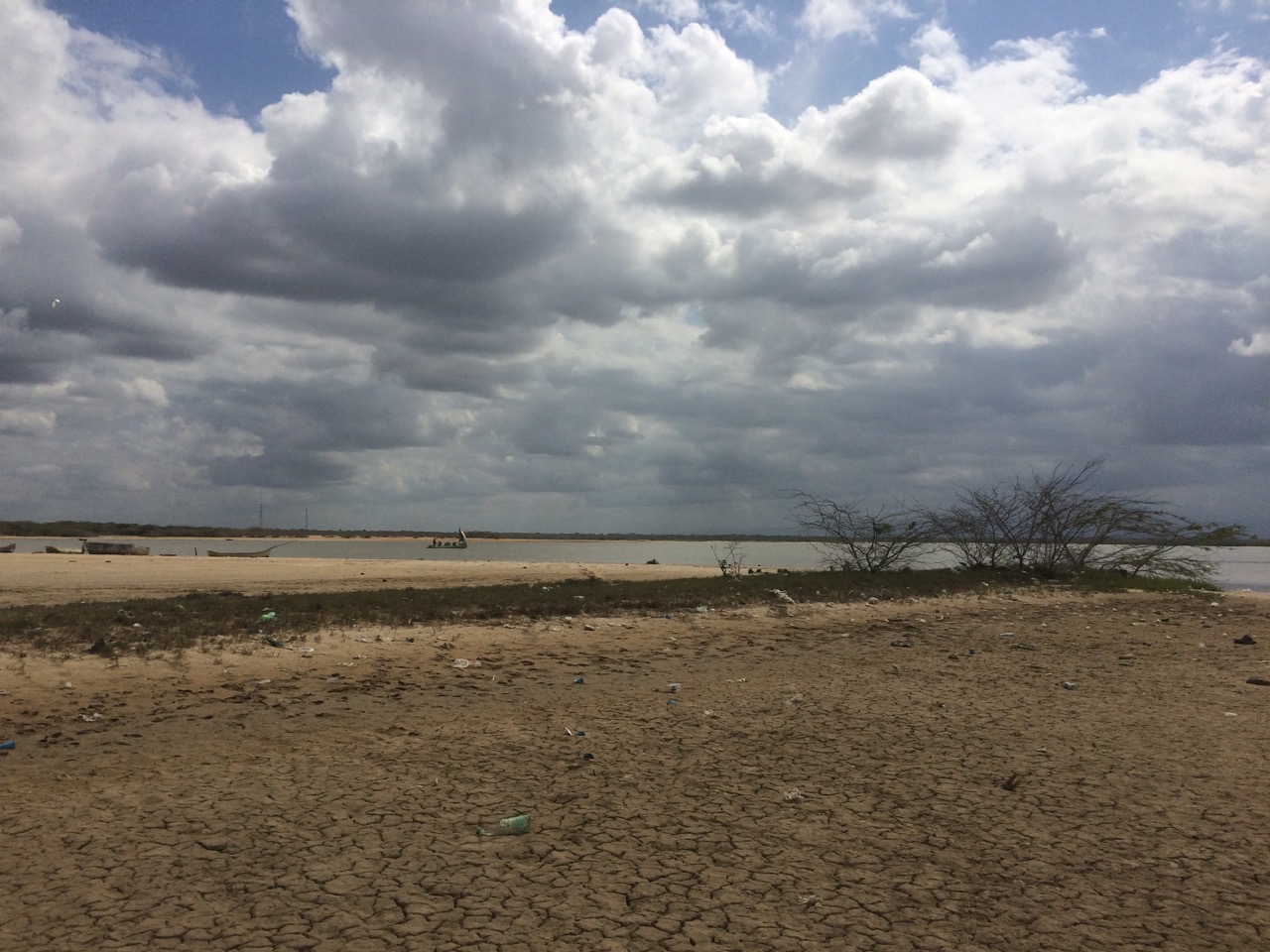
Soon, sand morphed into drying mud still too wet in some places. Couple times we had to walk around when the surface became too squishy.
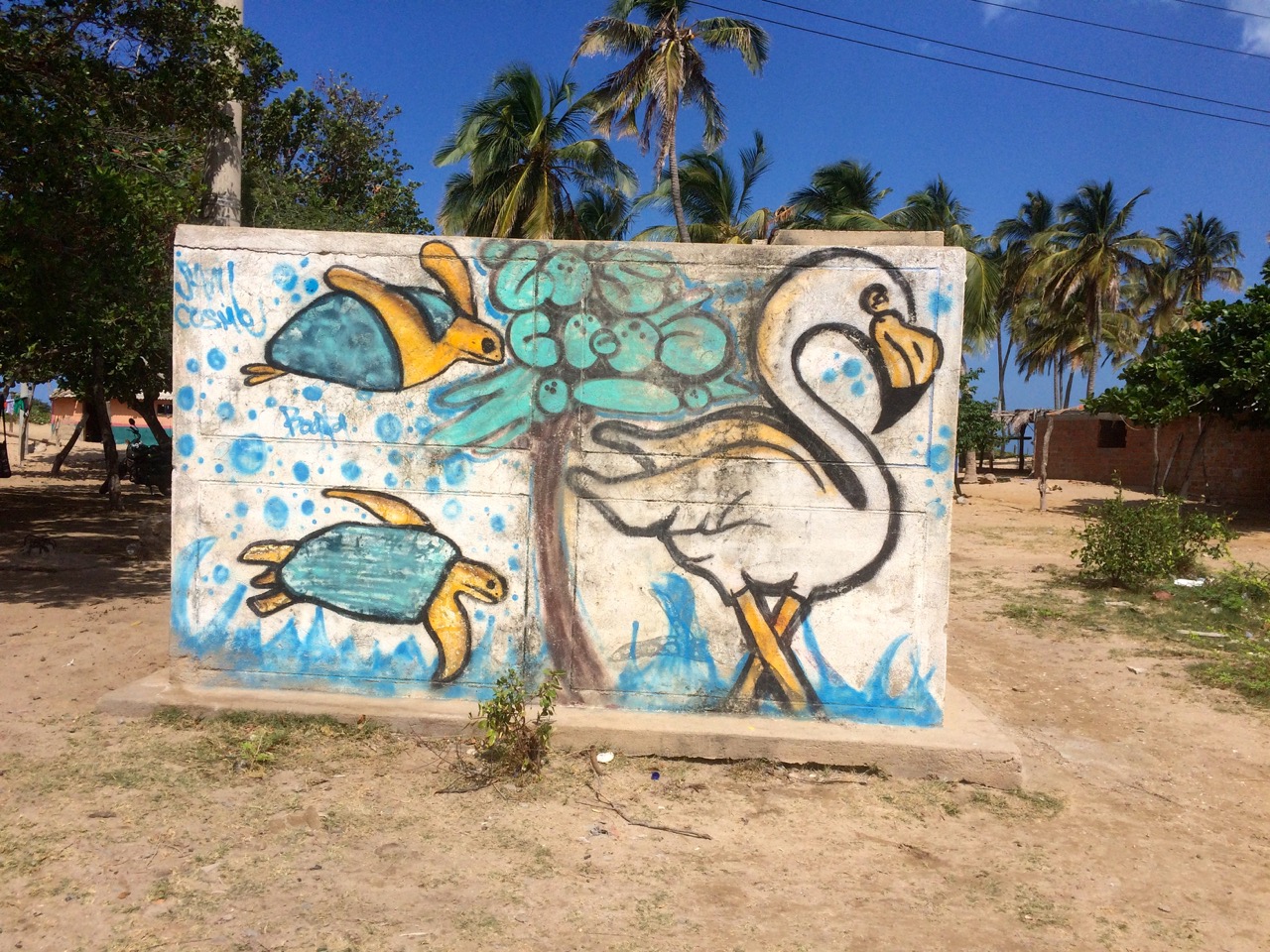
The village was not pretty. The smell of rotting garbage was overpowering and litter was everywhere. Nearby, there were a dodgy-looking restaurant and a hostel. Ok, maybe not truly dodgy just rundown, but it was surrounded by mounds of rotting shrimp remnants coupled with squashed empty beer cans, old papers, and other less identifiable stuff. The loud music was blaring from the hostel even though it looked deserted from afar.

The whole village was the stark reminder of the plight of indigenous tribes in Colombia.
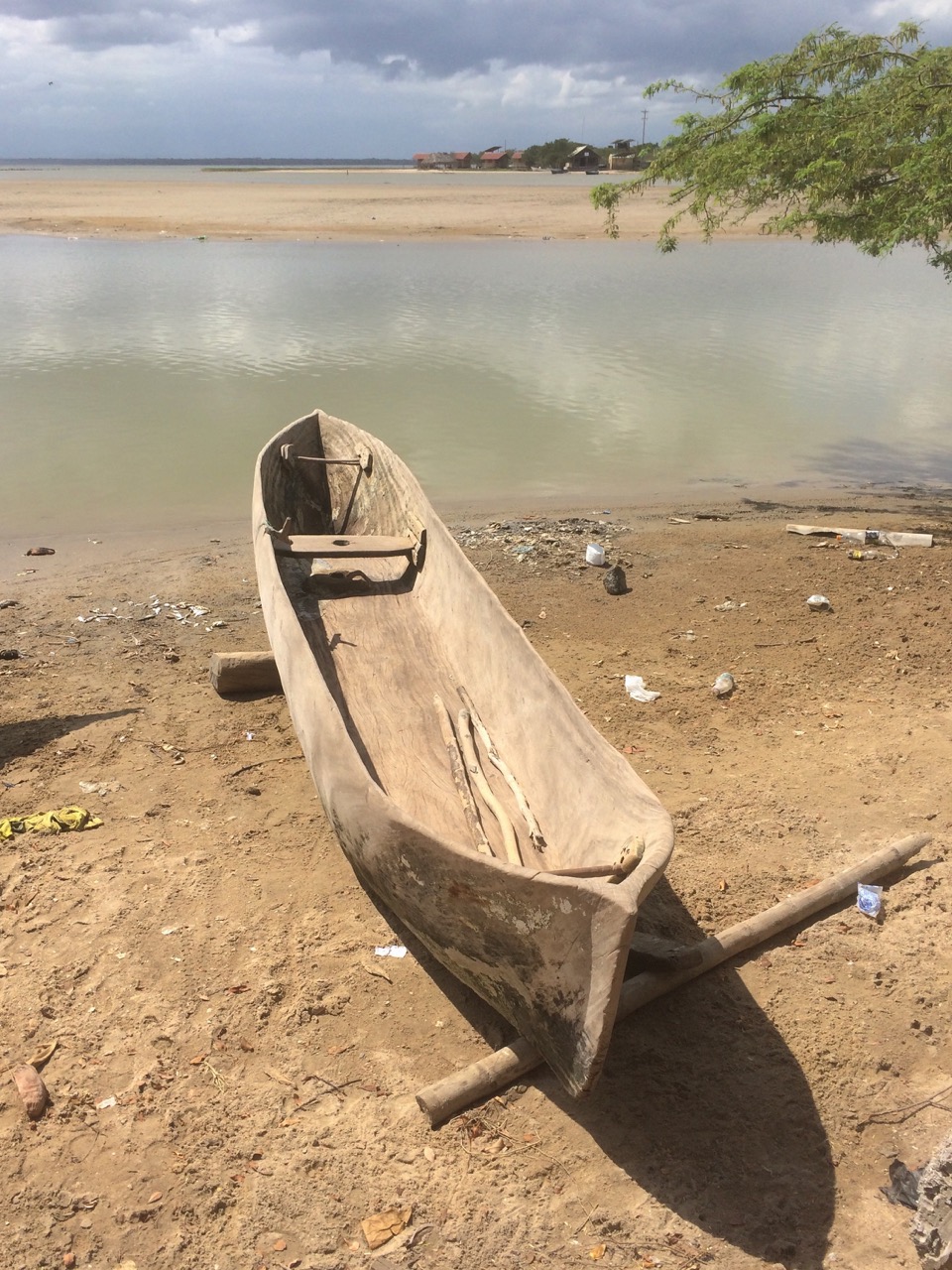
Our arrival woke up a couple dogs and a shady individual who slept in a hammock near the water. He offered us a boat ride to see flamingos.
On a previous night during dinner I mentioned that we were planning to visit the sanctuary to the owner of the cabins where we stayed. She prepared us for what to expect. According to local knowledge, once in the village, you would be approached by several people who run the boats to spot the flamingos. If you are lucky and there is already a large group of people waiting to go in the same boat, you would be charged about 20,000 pesos, otherwise if you decide to do it on your own the price would skyrocket and it would be up to you either to agree or to haggle. The local guides might cheat and show birds that closely resemble flamingos, but, in fact, are not flamingos at all. They do it mainly because it is necessary to cross the entire lagoon and go very deep into the swamp to find the places where flamingos might (or might not on that particular day and time) be found. It requires to spend more gas for the boat engine, so to keep profits higher the guides prefer to stay closer and show some random birds to clueless visitors.
Armed with this knowledge, the perspective of touring the swamp in a dingy boat chasing elusive birds which may or may not be flamingos was not exciting. I guess the guy sensed our apprehension and went back to his siesta.
We carefully navigated between dogs and kids, and witnessed a fascinating spectacle of shrimp catching by villagers casting nets over and over again in a knee-to-waste deep lagoon.
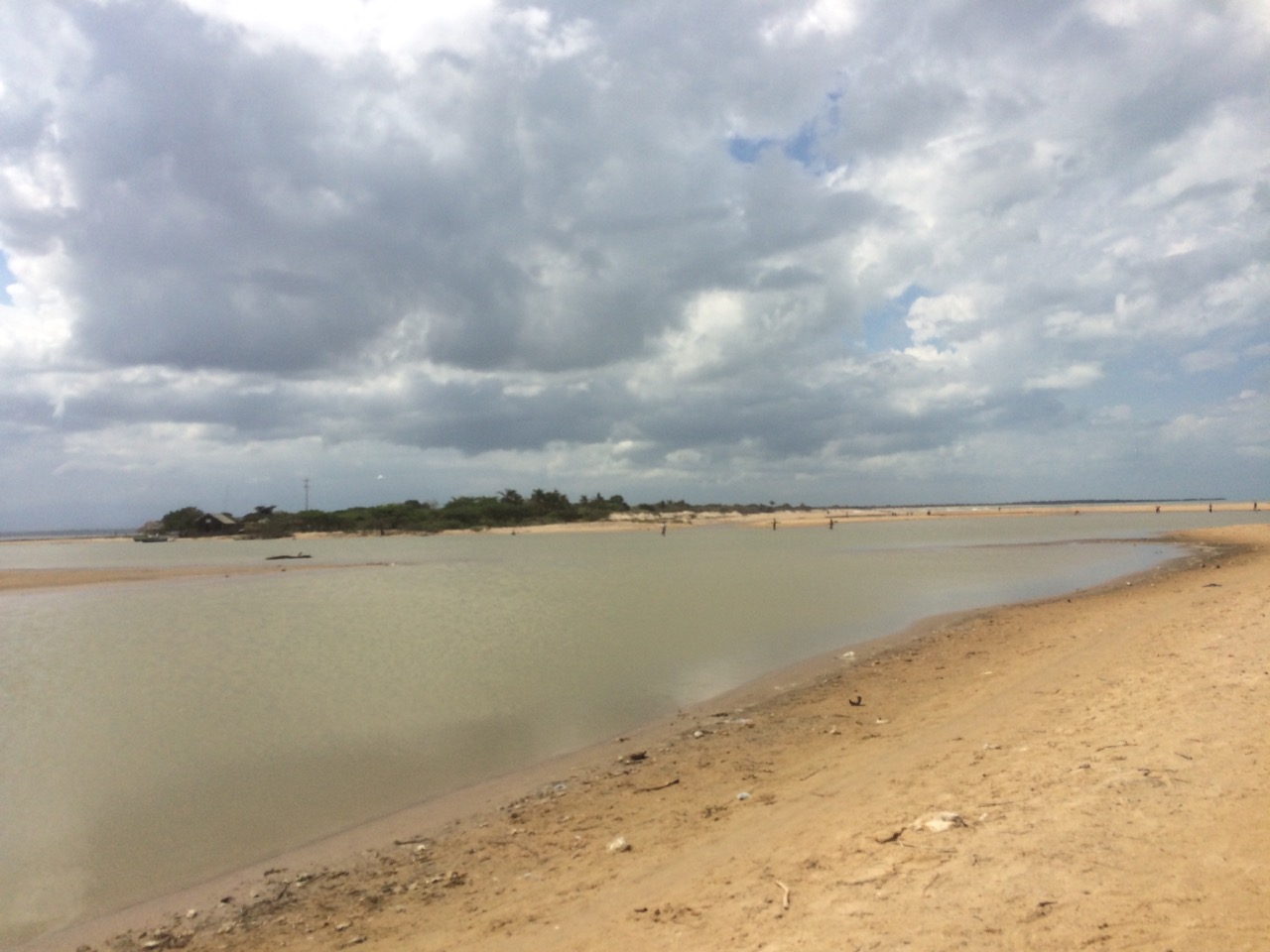
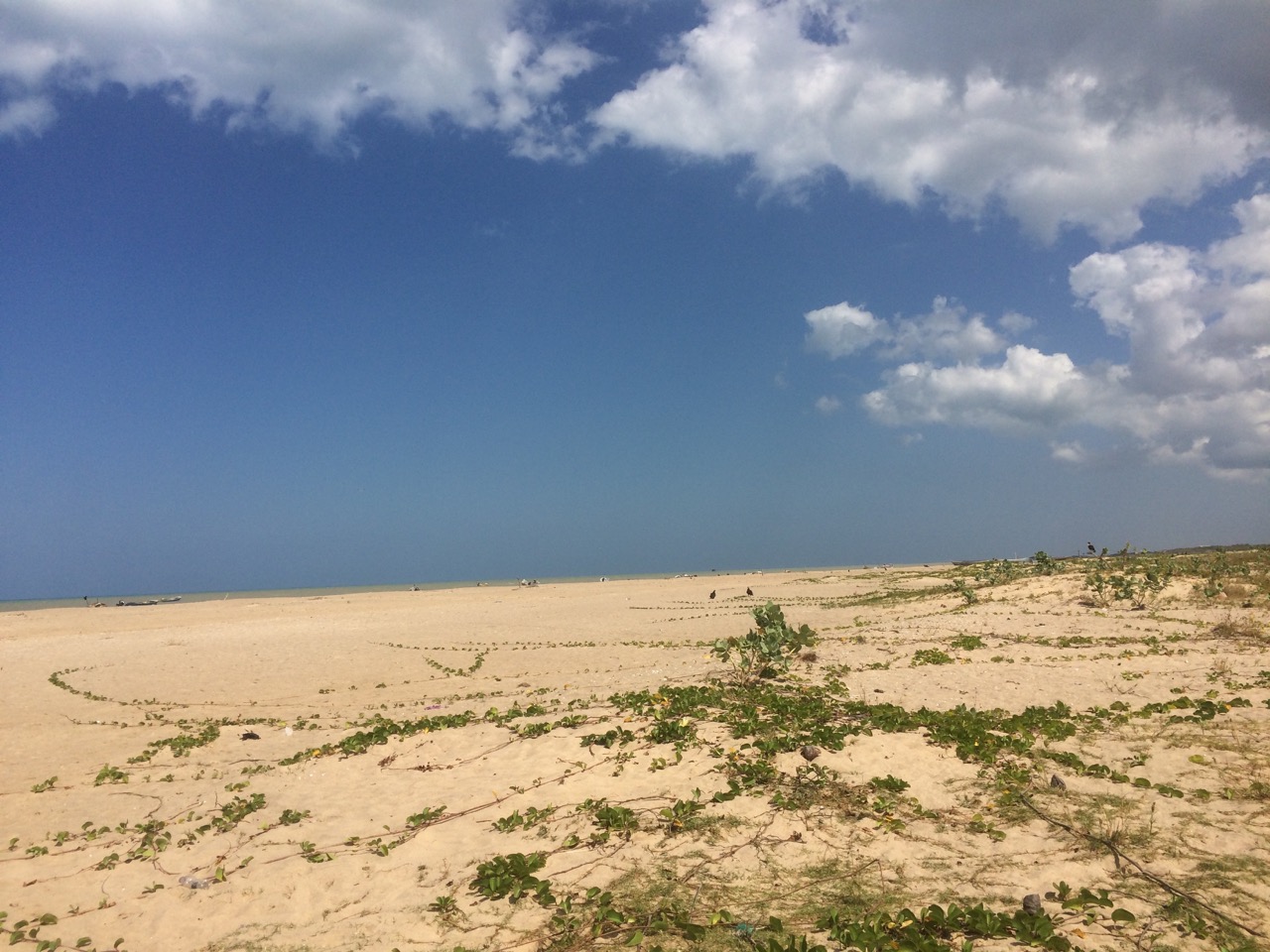
Finally, the sea! Suddenly, everything around looked like a completely different world. The deep blue skies, white fluffy clouds, twenty or so fishing boats jumping up and down between waves – it was an idyllic seascape from the bygone era.
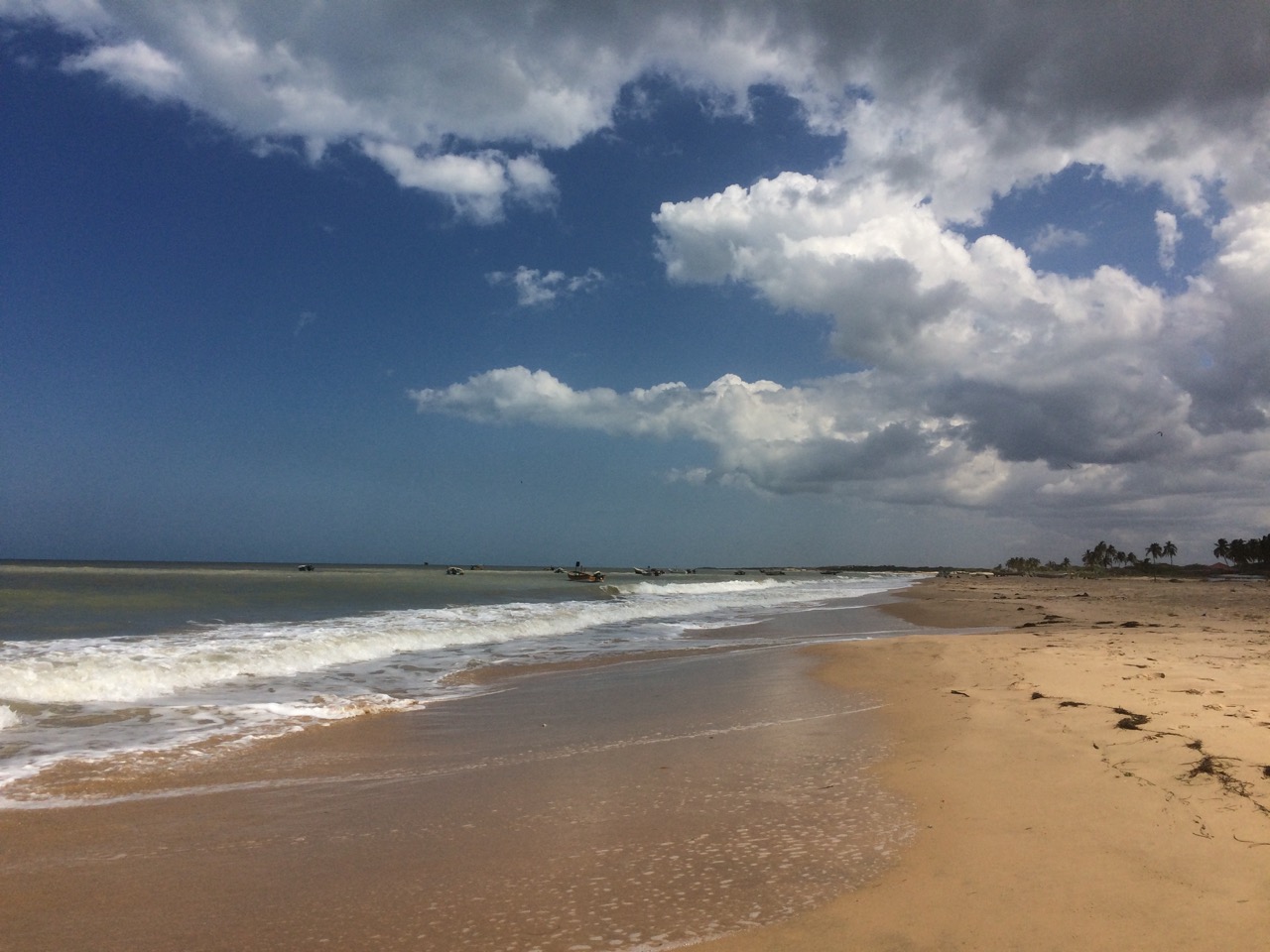
The fairly strong wind cooled the afternoon heat. Soon, all signs of human existence disappeared, and it was just sand, sun, and gleaming water.
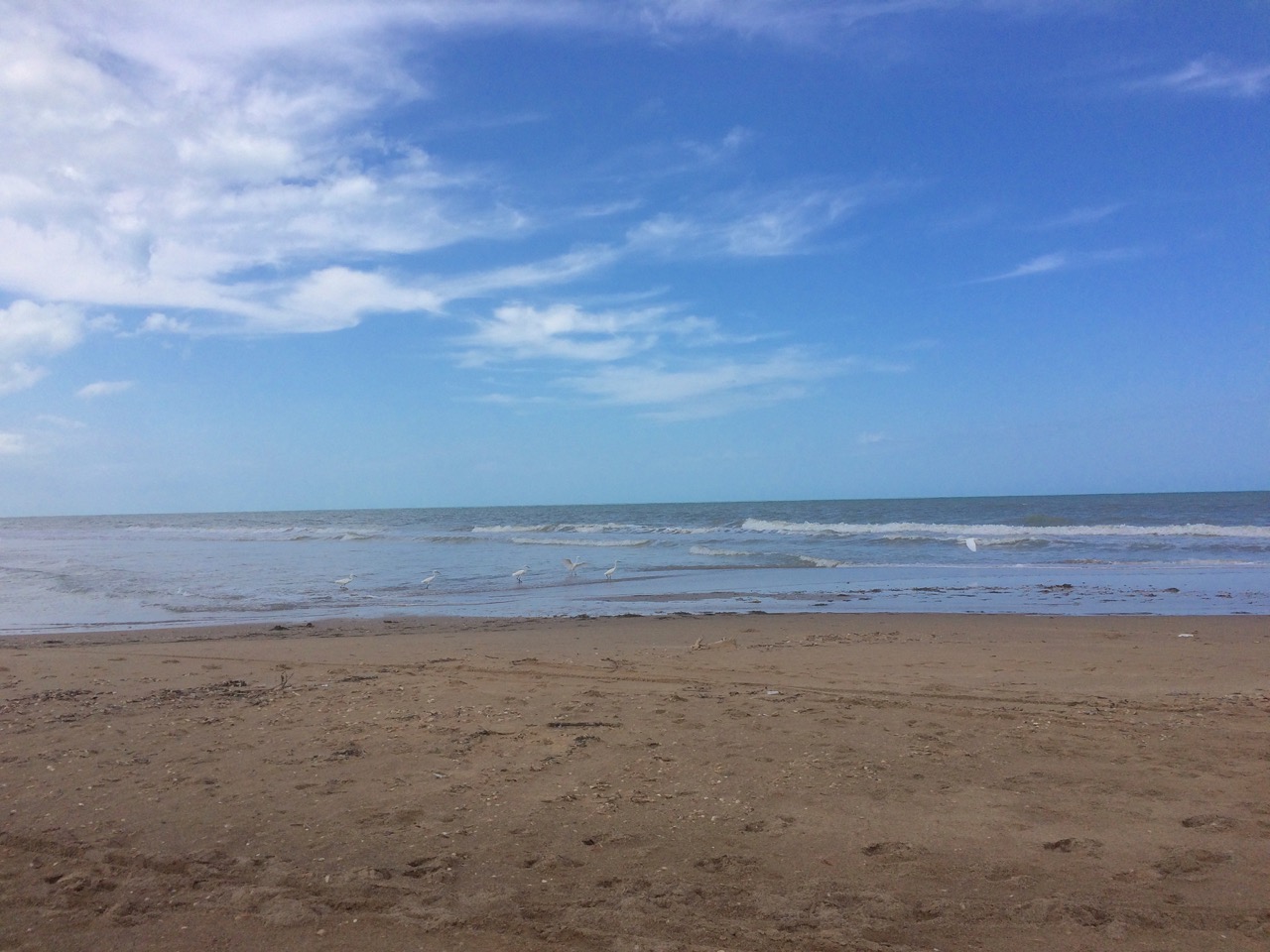
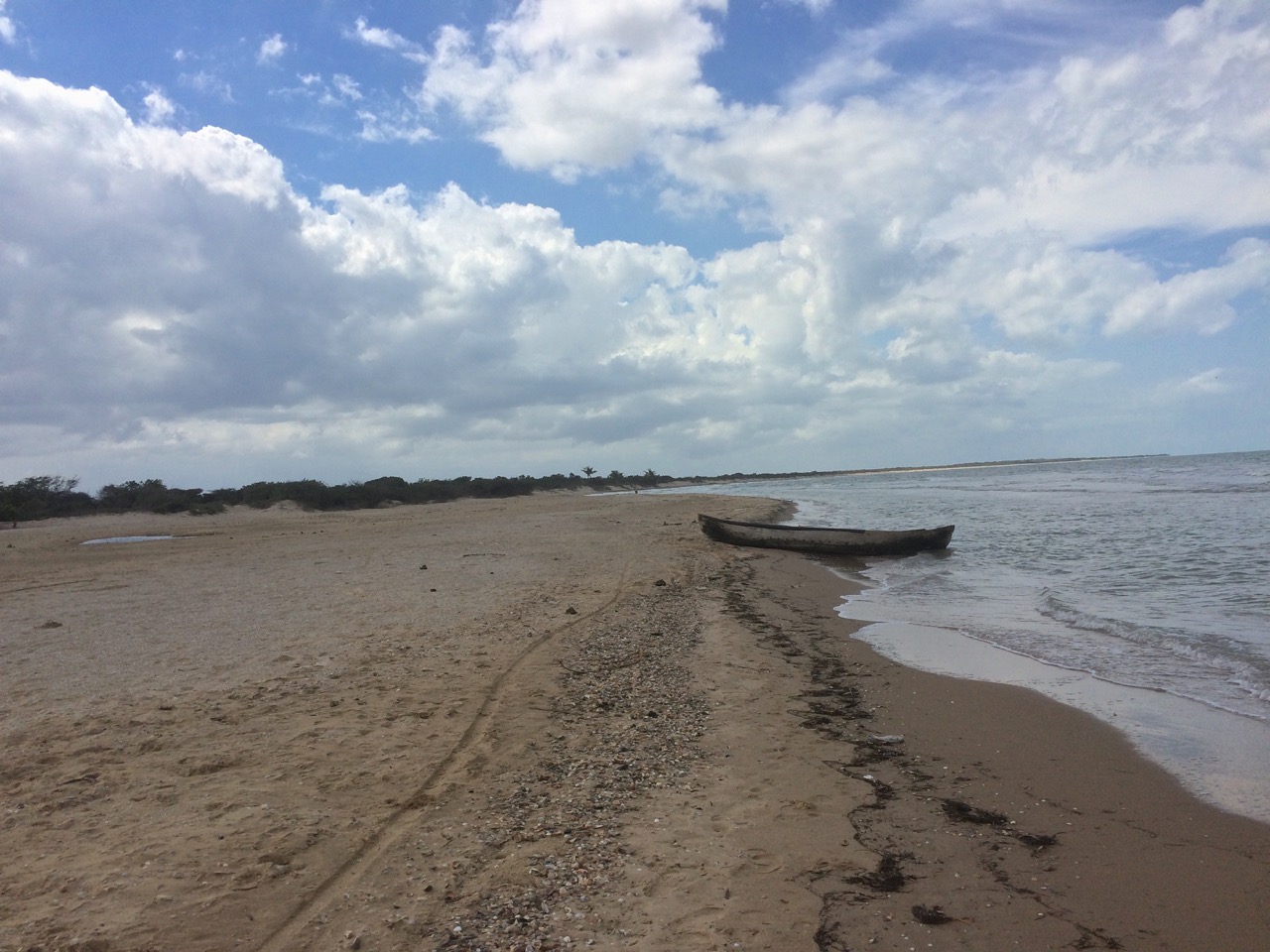
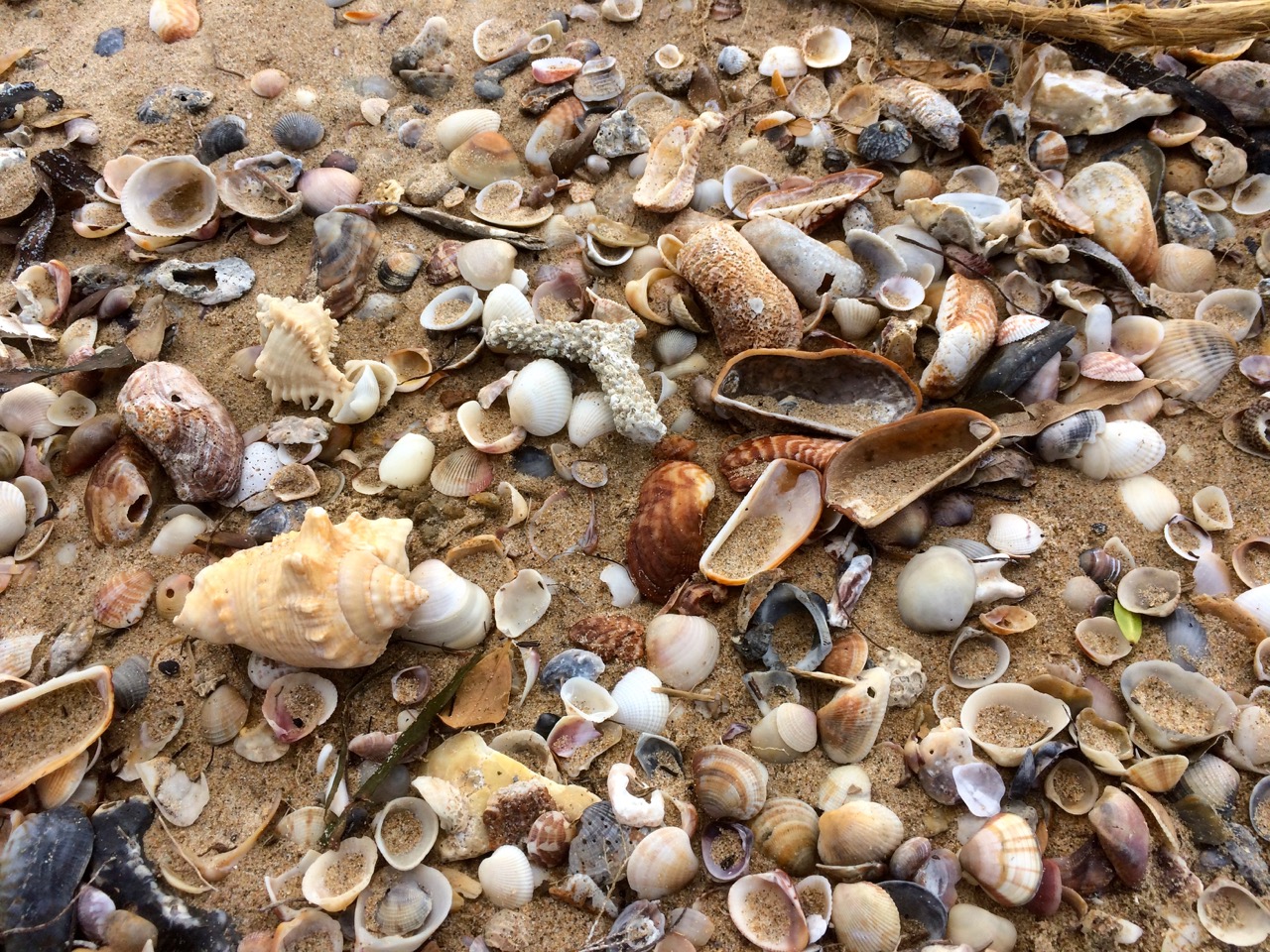

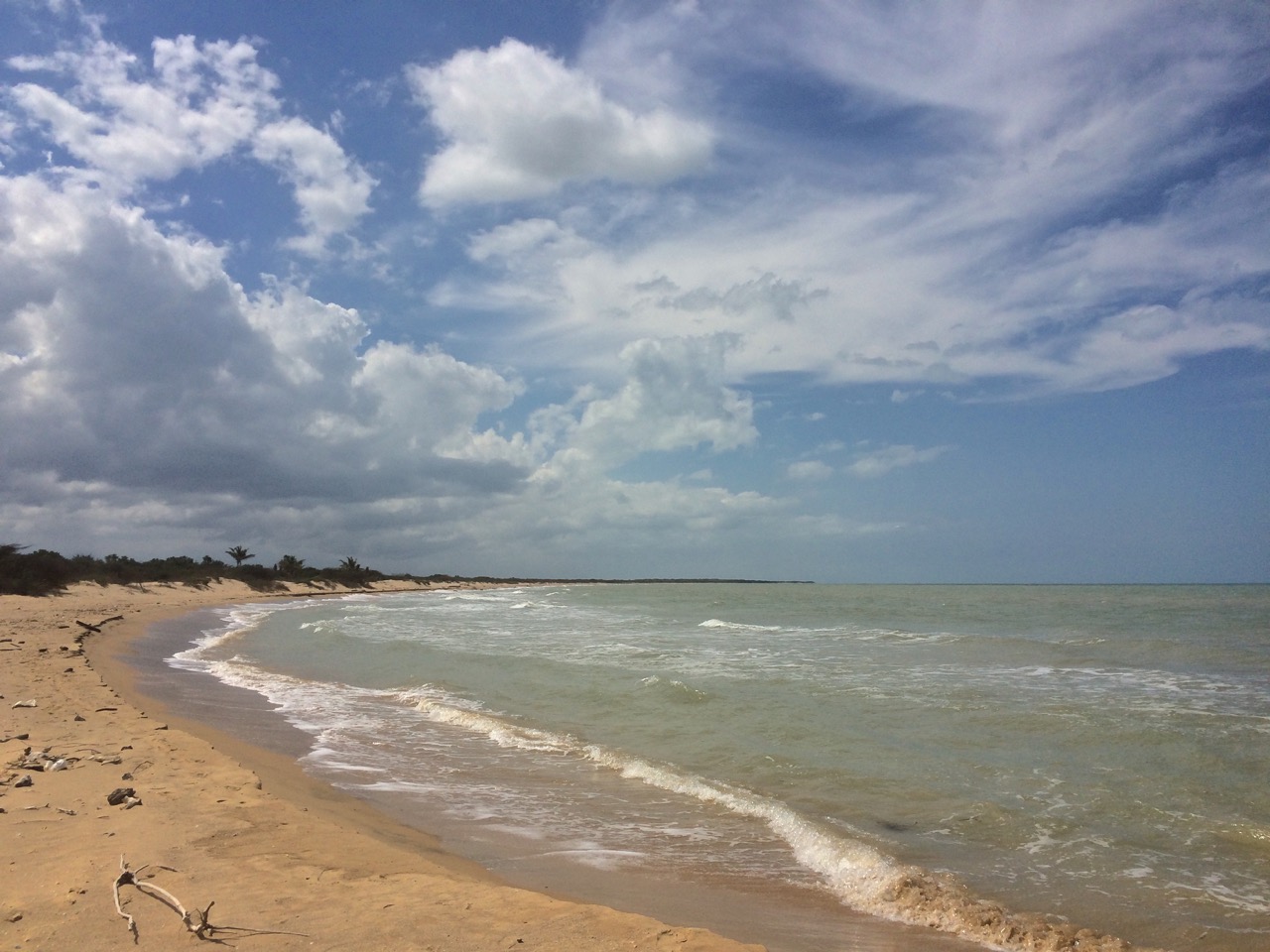

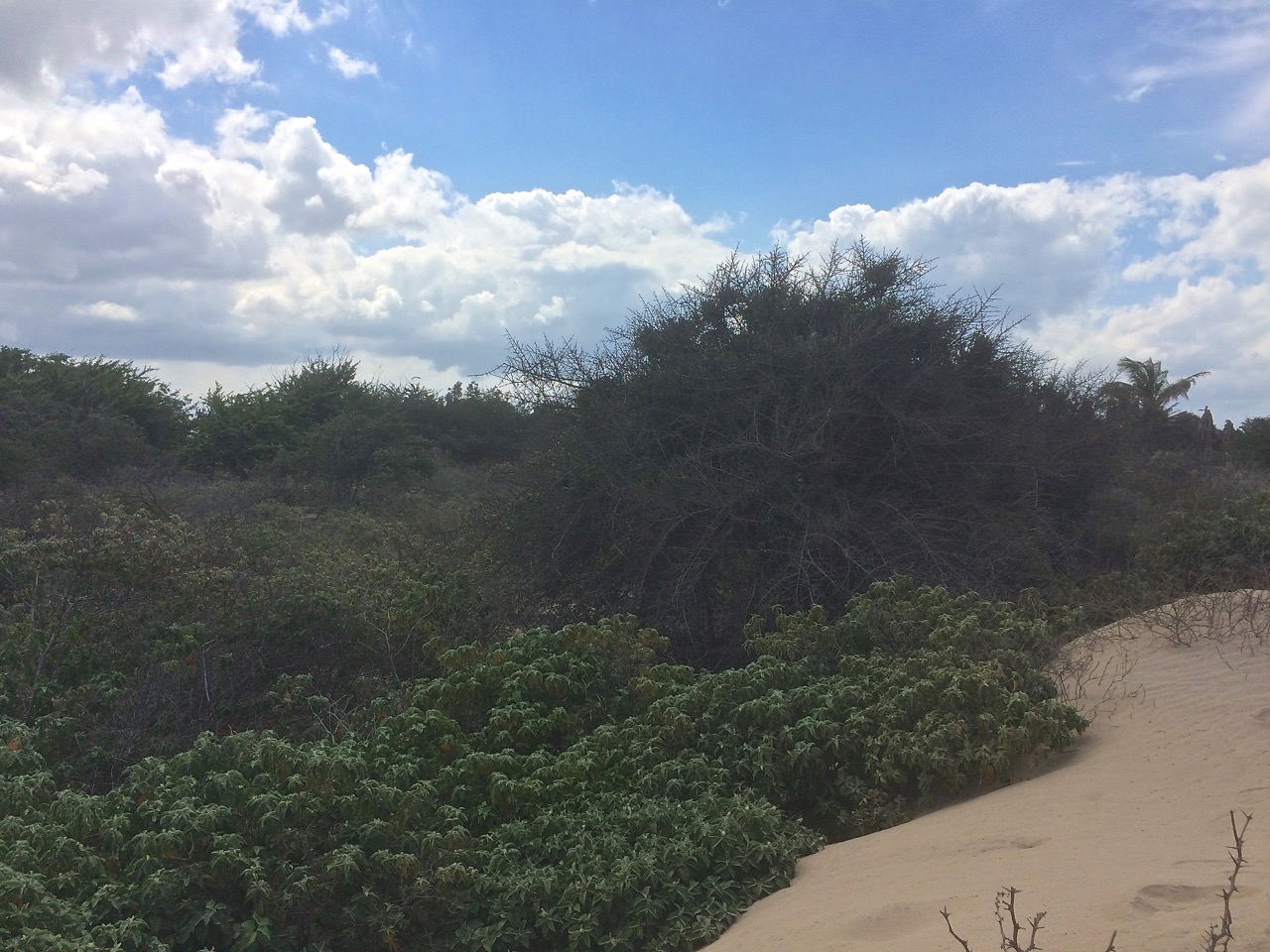
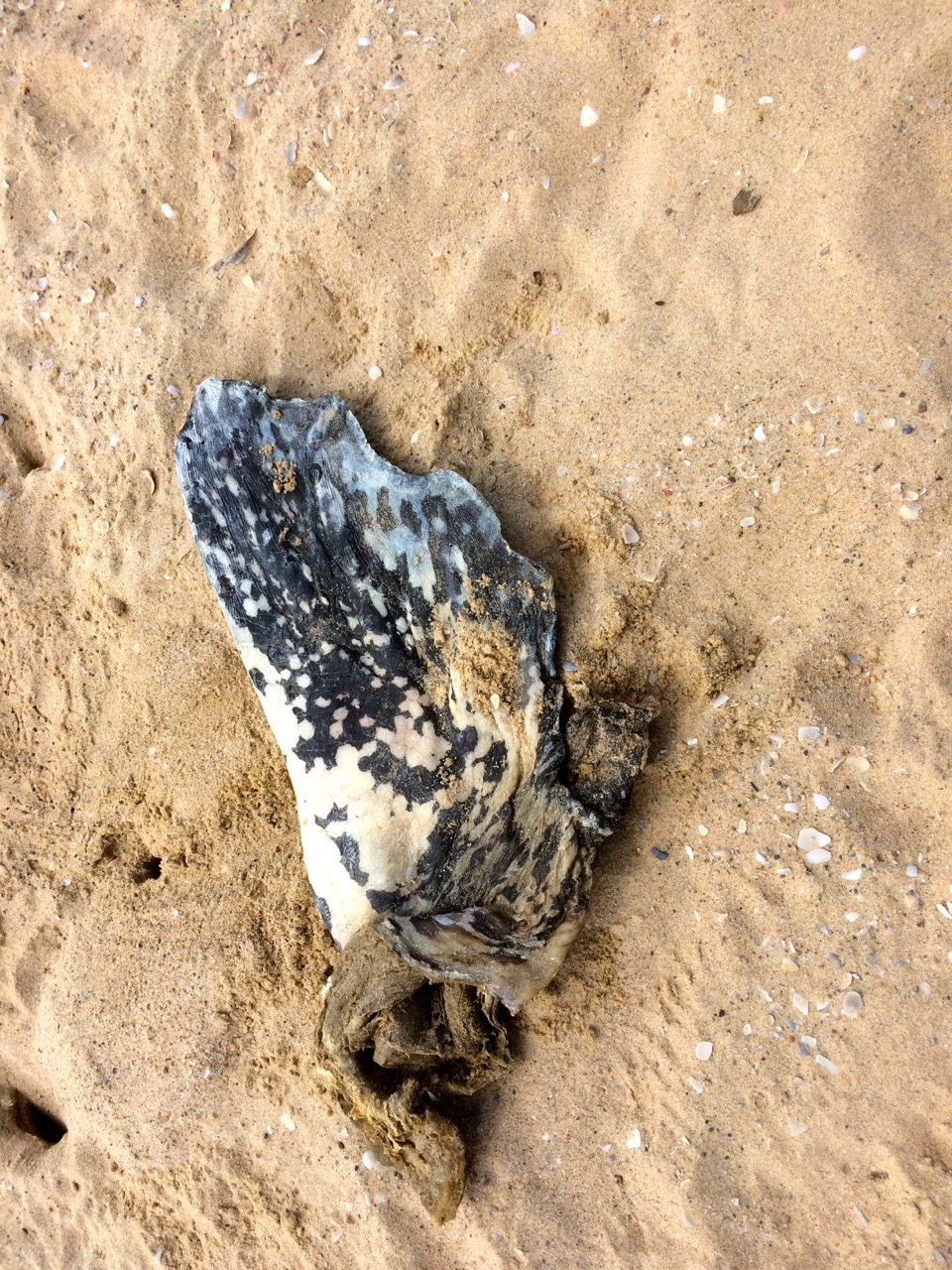
Boca de Camarones on Google Maps:
Boca de Camarones is a part of the larger administrative entity called the Camarones township. Here are some interesting facts about the township:
Camarones is the plural Spanish form of camarón, meaning “shrimp”
The history of Camarones:
In pre-colonial times, the Camarones township area was inhabited by indigenous Guanebucanes people. They were known for farming, hunting and fishing, mining and making jewelry. With the arrival of Europeans, Guanebucanes left the area and migrated to Sierra Nevada joining the Kogi and Wayúus.
During colonial times, the town of Camarones was situated along the beach, a few miles away from its current location. However, attacks and looting by pirates and storm surges that flooded the coastal area forced the town to relocate away from the sea.
By the mid-twentieth century, the township saw a decline in population with locals leaving in search of better jobs and living conditions in bigger cities.
Currently, the area’s population predominantly consists of indigenous Wayúus and Afro-Colombians.
Fishing is one of the main economic activities of the township. Farms are scattered here and there raising cattle and goats. Tourism is becoming a more prominent part of the local economy. Visitors mostly coming in search of flamingos and turtles, and relaxing on white sand beaches.
The seacoast consists largely of low clay cliffs. The white sand beaches are located at the mouths of rivers.
The climate is dry. The temperature varies between 28°C to 45°C. The intense heat can become dangerous during a daytime. The most frequent rains occur from September to November.
Sources:
- Camarones (Colombia) from Wikipedia (in Spanish)
- Santuario de Fauna y Flora Los Flamencos (in Spanish)
Camarones on Google maps:
Beautiful. I have to get to Colombia!
Colombia is fantastic and so diverse. You won’t regret visiting it.
Great photo tour. Loved the clicks.
Thank you.
Idyllic is definitely the right word. It’s so raw and untouched, and everything about it is pretty, from the shells to the brambles even!
What a wonderful description! Thank you.
very nice pictures!
Thank you!
Sounds like you had an interesting experience. Sometimes these type of places where you are not really sure what to expect are the best. Those boats look cool, really authentic and the beaches really unspoilt.
Thank you. You are absolutely right. This trip turned out completely different than the original plan, but it made it even more interesting.
Really adore the photo of all those sea treasures. Really makes me want to head to a beachy area immediately! Love how vast your photos are, they really capture a lot!
Thank you, Alli. It was a beautiful coast.
The place looks as if it lacks some color. But it does look peaceful though. Great post, btw.
Thank you!
It’s a pity that you didn’t see flamingos but you could still enjoy your time, especially because of lack of the tourists there.
The seacoast was so picturesque that it was easier to forget about missing flamingos.
Love your photos! It looks so peaceful and quiet.
Sorry to hear the village wasn’t exactly fun, but thanks for pointing it out. Too bad those guides scam tourists that way (although the explanation seems quite legit). Still it looks like a wonderful day trip, according to your photos! 🙂
Thank you, Rose. It was a truly great experience.
First, love the title! Second, it sucks that the town smelled of rotten garbage and a putrid and strong odor. Though it was not beautiful or necessarily what was anticipated, it does make for a good story and an experience!
It looks like you had an experience! The photos are amazing and the pace looks so peaceful
Great photos! It looks so peaceful 🙂
These secluded beaches seem to be really amazing. It’s great to see that there are still nice beaches like these without tourist hordes in Colombia. Thanks for sharing!
Beautiful photographs. I would love to see all the shells! I love quiet, beaches – I think that’s the way they should all be.
Thank you!
The village does look pretty sketchy! Often the reality doesn’t live up to what you’re told. Lots of scams to avoid in these places too. The beach looks beautiful and it’s good to know what to expect here. Great post and fantastic photos
Thank you! The beaches were so fantastic that I do not have any regrets about skipping flamingos search.
Great you guys went there, not many tourists decide to visit la Guajira in Colombia…Those beaches are amazing , especially missing all the crowds of backpackers and other tourists you see everywhere on the Colombian coast…
Thanks! Colombia is beginning to suffer from its recently found popularity. There are already too many tourists tramping beautiful Tyrona to the point that it’s not enjoyable anymore. It would be sad to see la Guajira following. Unfortunately, it seems that Colombia is more interested in making money out of these beautiful places, but not preserving them 🙁